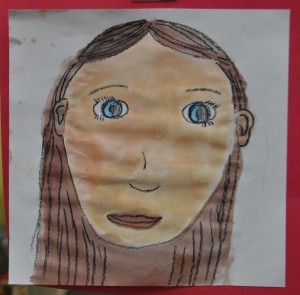I’ve been asked several times to share our art-history projects here, but I haven’t yet quite figured out how I want them to be organized. Rather than put it off any more I decided to just begin dumping information, and do the organizing later. Lets hope the plan works out better here than it does in my attic (which really, really needs to be organized again).
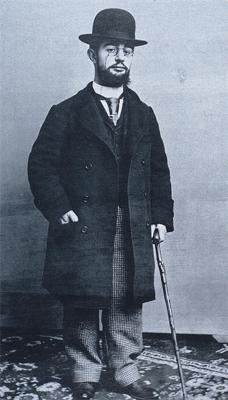
Henri de Toulouse-Lautrec
1864-1901
Henri de Toulouse-Lautrec suffered from a bone disorder, and, after breaking two femurs, reached only a little over four and a half feet tall at maturity. His appearance affected the rest of his life. He loved the theater and was quick to joke, often making fun of himself, ostensibly, before others could laugh at him.
He was born to an aristocratic family, and received a very large allowance which allowed him to work full time as an artist. He spent his nights gathering inspiration and sketching at dance halls, and his days painting. While it seems that life without the limits of financial concerns would be wonderful, this may have been the beginning of Lautrec’s demise. He became hopelessly dependent on alcohol and made many poor decisions that affected his health.
Lautrec’s artistic-hero was Edgar Degas, another French artist. Both used dancers “in the moment” as their choice subject, but their styles were strikingly different. Degas, 30 years senior, had a great influence on Lautrec’s work.
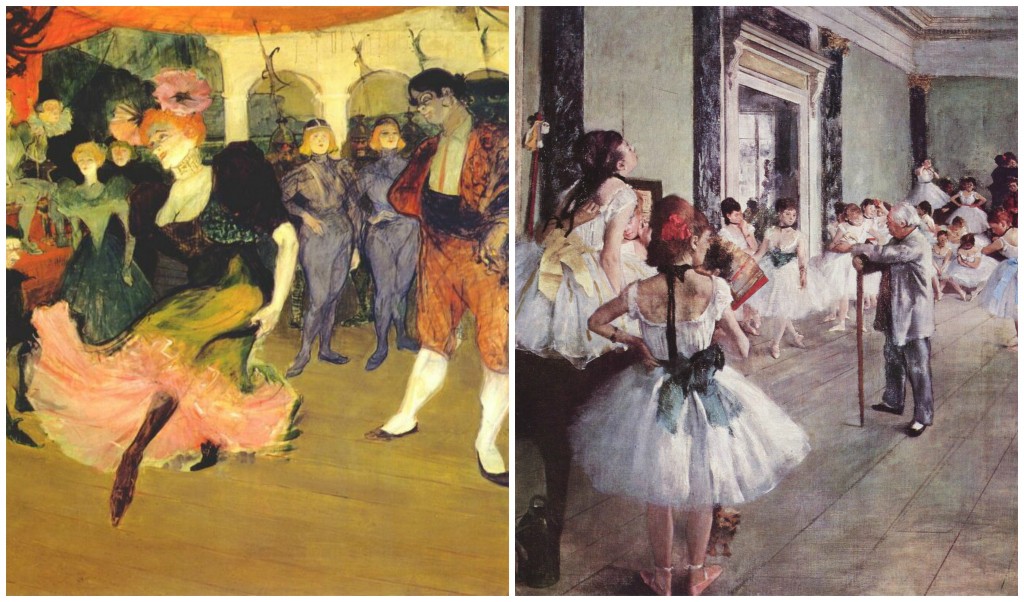
The Dance Class (La Classe de Danse),1873–1876, Edgar Degas
{{PD-Art}}
All of that time at the dance halls may have harmed Toulouse-Lautrec’s personal life, but it benefitted his career. He was asked to paint posters advertising shows, and it is these posters that we generally equate with Lautrec’s name. He used simple outlines and bold coloring to catch the attention of people walking past.
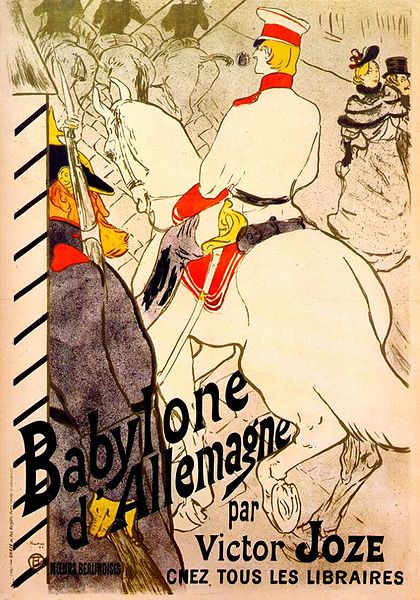
Read:

Create:
- Water paints
- Round Watercolor brush (size 6 to 9)
- Small container with lid for water
- Construction paper
- 1 sheet red or black – cut down to 12”x12” – use as a background “frame” for your completed work
- 1 sheet white cut down to 11″x11″ (for better results use watercolor paper)
- Black crayon – sharp
- Glue stick
- Pencil with an eraser (does not need to be an artist pencil)
- Practice drawing faces with proportion grids online, and then on paper. Scroll down to view all of the instructions. Use a black crayon to boldly trace your final lines after erasing any extra pencil marks. This will give your work an appearance similar to Lautrec’s. Use water paints to color in your portrait.
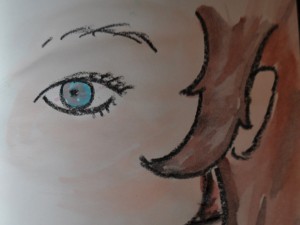
- Try using your water paints to complete this coloring page of Toulouse-Lautrec’s painting. Don’t forget to use eye-catching colors!
- Do another copy with marker, and a third with crayons. Compare the results. Which looks most like the original oil painting above?
Consider:
Henri de Toulouse-Lautrec died at a very young age because of the poor choices that he made.
The Bible says a lot about keeping ourselves healthy. Many people may respond “Who cares? It’s my body, isn’t it?” Well, to be honest, the answer from the Lord is a resounding, “I care.” and “No, it really isn’t your body to begin with. I created you, I died for you, and I love you even more than you love yourself.”
Here is the direct quote from 1 Corinthians 6:19-20
“Do you not know that your bodies are temples of the Holy Spirit, who is in you, whom you have received from God? You are not your own; you were bought at a price. Therefore honor God with your bodies.”
We all make mistakes. Encourage your child to discuss the many ways that life can be hard. Remind them that Jesus said, “I have overcome the world.” He can help where alcohol and other indulgences cannot. He does not always make our problems go away, but He promises to help us.

